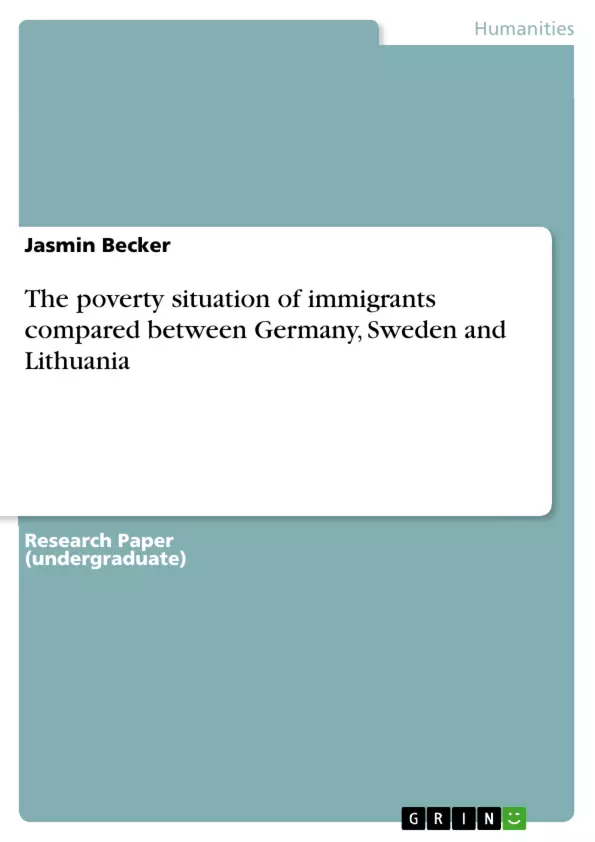Diese Arbeit ist im Rahmen des "European educational programme in social work" entstanden und bietet einen länderübergreifenden Blick auf ausgewählte Aspekte Sozialer Arbeit.
Inhaltsverzeichnis (Table of Contents)
- Introduction
- The situation of immigrants in Germany
- The situation of immigrants in Sweden
- The situation of immigrants in Lithuania
- Comparison
- Bibliography
Zielsetzung und Themenschwerpunkte (Objectives and Key Themes)
This paper examines the poverty situation of immigrants in Germany, Sweden, and Lithuania. It aims to understand the challenges immigrants face in these countries, specifically regarding their access to education, employment, healthcare, housing, and social inclusion. The paper compares the situation of immigrants across these nations to identify commonalities and differences.
- Poverty and social exclusion among immigrants
- Educational opportunities and challenges for immigrant children and youth
- Labor market participation and employment barriers for immigrants
- Health disparities between immigrants and native populations
- Government policies and programs aimed at immigrant integration
Zusammenfassung der Kapitel (Chapter Summaries)
The introduction lays out the scope and purpose of the study, focusing on the poverty situation of immigrants in Germany, Sweden, and Lithuania. It outlines the specific areas of investigation, including labor market participation, education, health, and social inclusion. The paper then delves into the situation of immigrants in each country, providing detailed analyses of their socioeconomic conditions. The final chapter compares and contrasts the findings across the three nations.
Schlüsselwörter (Keywords)
Immigrant poverty, social exclusion, education, labor market, health disparities, integration policies, Germany, Sweden, Lithuania.
- Quote paper
- Jasmin Becker (Author), 2005, The poverty situation of immigrants compared between Germany, Sweden and Lithuania, Munich, GRIN Verlag, https://www.grin.com/document/186309



